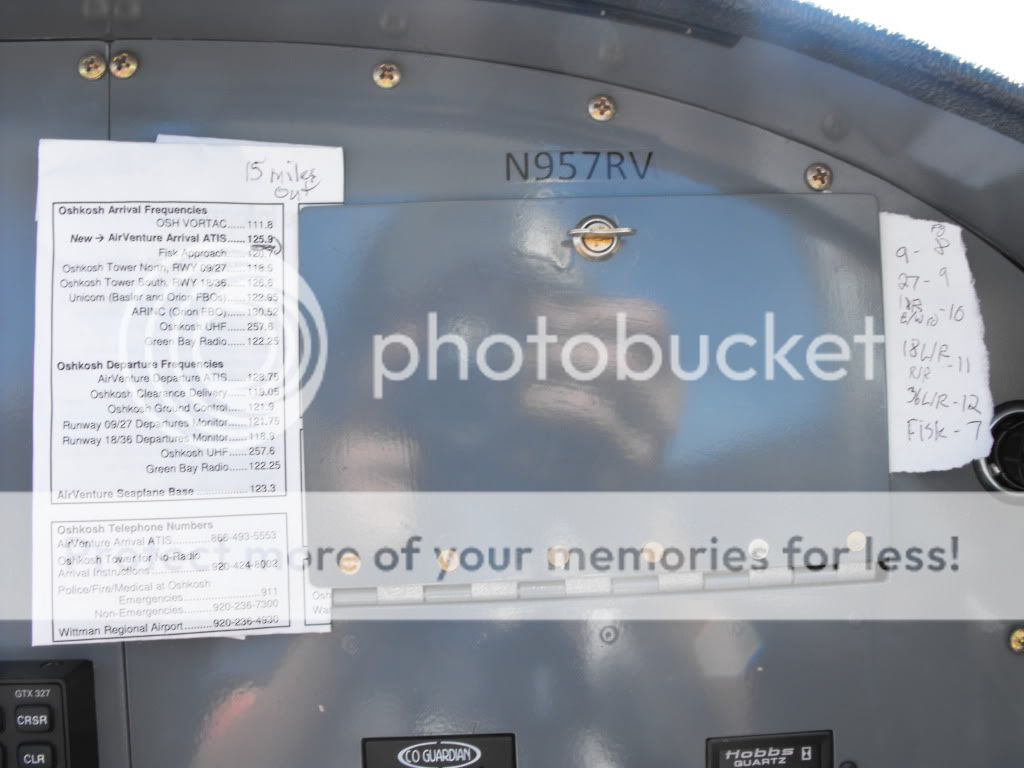tkatc
Well Known Member
This is my second post regarding air venture advice. The first one yielded excellent results so I figured I'd try again as my plan has changed. I am now FLYING my own RV into OSH!!!
The NOTAM for 2011 has now been released and I briefly read over it. I understand that slow flight operations will be essential. I practiced slow flight today for a bit. I trimmed it up for 70kts and flew a 360 in each direction and drug it home to land over 10 miles. Seemed easy out there on my own...but add busy traffic and it may be a different story. I wish airventure would make an arrival video exposing the procedure as they flew in. I want to know how many planes to expect to see (in the air) and how to determine the pecking order for arrival over Ripon. What are the realistic speeds I should expect? Is there a better time for 1st timers to arrive? How likely is it to have to divert to an alt airport? If things go "south", what is the acceptable bail out procedure?
I also see that tie downs are required. Can I wait til I arrive to purchase them? I assume better deals.
The NOTAM for 2011 has now been released and I briefly read over it. I understand that slow flight operations will be essential. I practiced slow flight today for a bit. I trimmed it up for 70kts and flew a 360 in each direction and drug it home to land over 10 miles. Seemed easy out there on my own...but add busy traffic and it may be a different story. I wish airventure would make an arrival video exposing the procedure as they flew in. I want to know how many planes to expect to see (in the air) and how to determine the pecking order for arrival over Ripon. What are the realistic speeds I should expect? Is there a better time for 1st timers to arrive? How likely is it to have to divert to an alt airport? If things go "south", what is the acceptable bail out procedure?
I also see that tie downs are required. Can I wait til I arrive to purchase them? I assume better deals.
Last edited:





